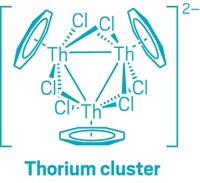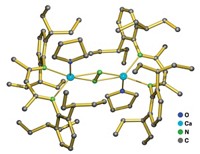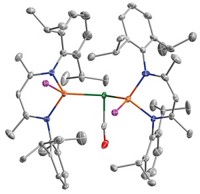Advertisement
Grab your lab coat. Let's get started
Welcome!
Welcome!
Create an account below to get 6 C&EN articles per month, receive newsletters and more - all free.
It seems this is your first time logging in online. Please enter the following information to continue.
As an ACS member you automatically get access to this site. All we need is few more details to create your reading experience.
Not you? Sign in with a different account.
Not you? Sign in with a different account.
ERROR 1
ERROR 1
ERROR 2
ERROR 2
ERROR 2
ERROR 2
ERROR 2
Password and Confirm password must match.
If you have an ACS member number, please enter it here so we can link this account to your membership. (optional)
ERROR 2
ACS values your privacy. By submitting your information, you are gaining access to C&EN and subscribing to our weekly newsletter. We use the information you provide to make your reading experience better, and we will never sell your data to third party members.
Inorganic Chemistry
Zeroing in on magnesium
Chemists make the first stable Mg(0) complexes
by Bethany Halford
May 2, 2021
| A version of this story appeared in
Volume 99, Issue 16

Like most of the elements in the periodic table’s second column, magnesium eagerly gives away a couple of electrons to achieve a full outer shell and a +2 oxidation state. For the first time, chemists have maneuvered magnesium into a stable complex (shown) where it possesses all its electrons (Nature 2021, DOI: 10.1038/s41586-021-03401-w). Sjoerd Harder and colleagues at Friedrich Alexander University Erlangen-Nuremberg accomplished this feat with the help of bulky β-diketiminate ligands. To make the Mg(0) complex, the chemists reduced ligand-bound Mg2+ with fine sodium metal. As a result, the complex contains the first observed Mg–Na bonds. Although the complex is moderately stable at room temperature, it is highly reactive, readily reducing Na ions to Na metal and breaking H2 as well as a C–F bond. When dissolved in benzene, the Mg(0) complex slowly decomposes to form a structure with a linear Mg3 core. The researchers suggest that such Mg metal clusters might be fleeting intermediates in the formation of Grignard reagents, which have been synthetic tools for more than a century even though their formation remains something of a mystery.





Join the conversation
Contact the reporter
Submit a Letter to the Editor for publication
Engage with us on Twitter